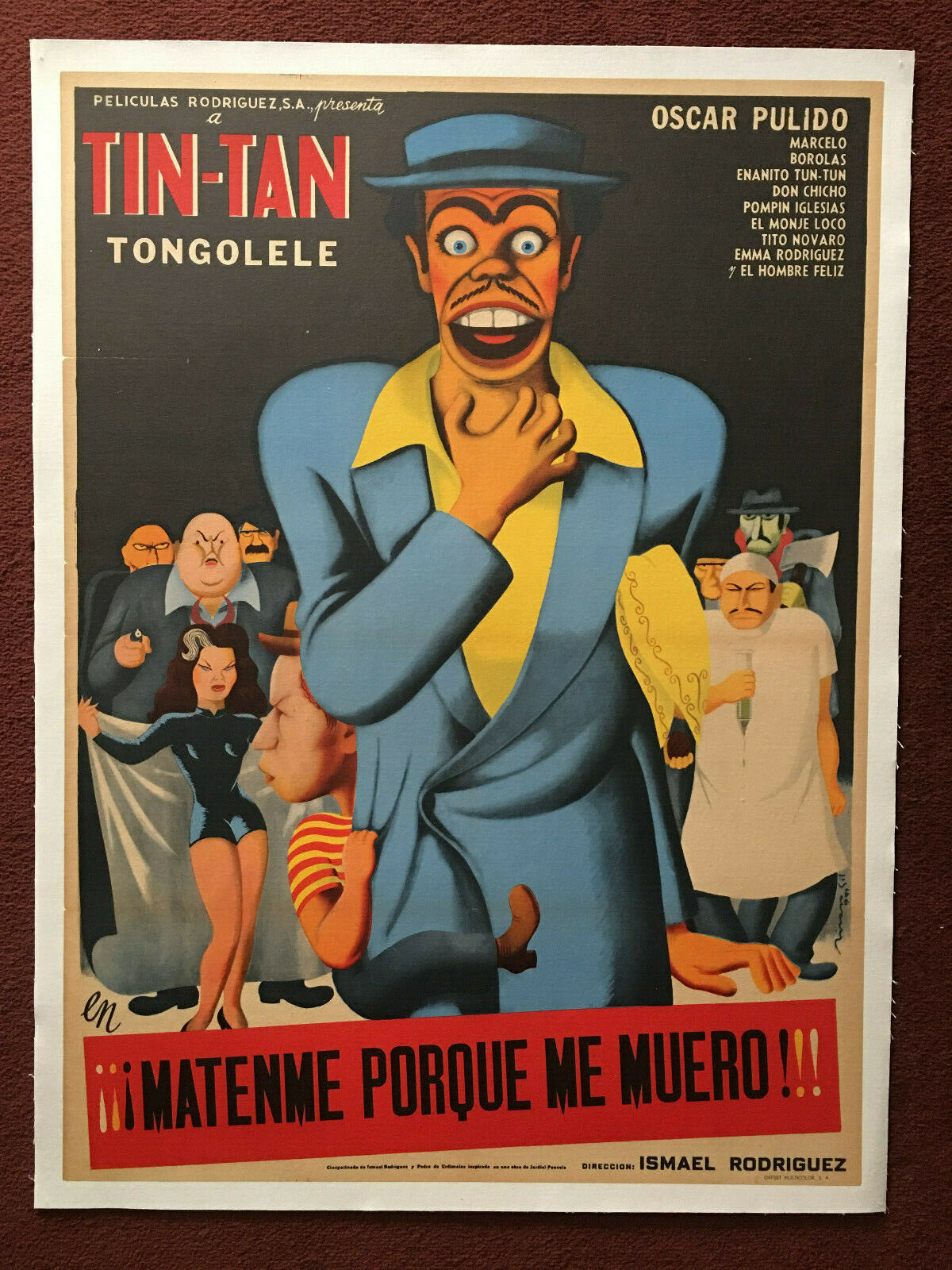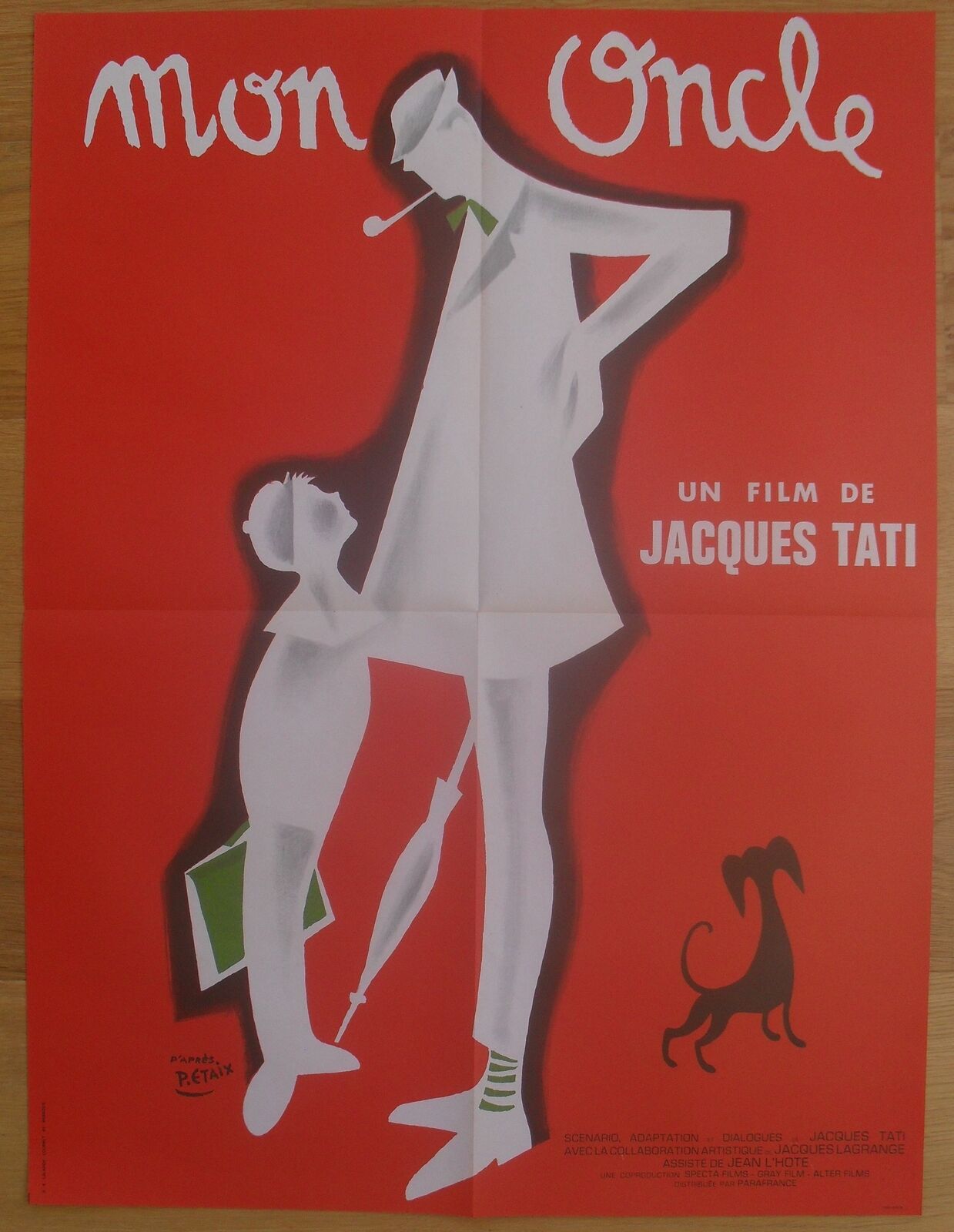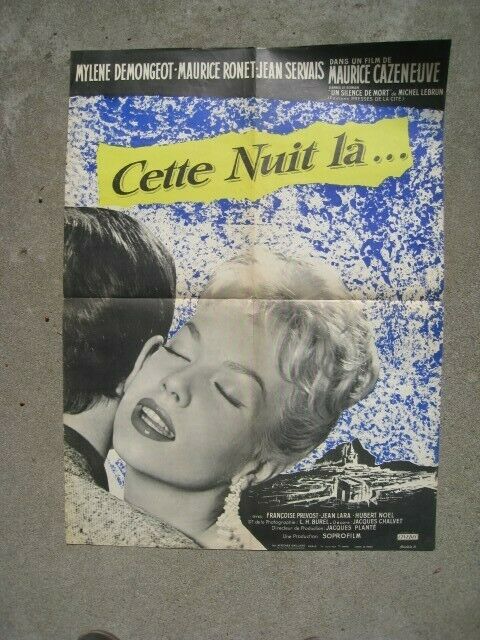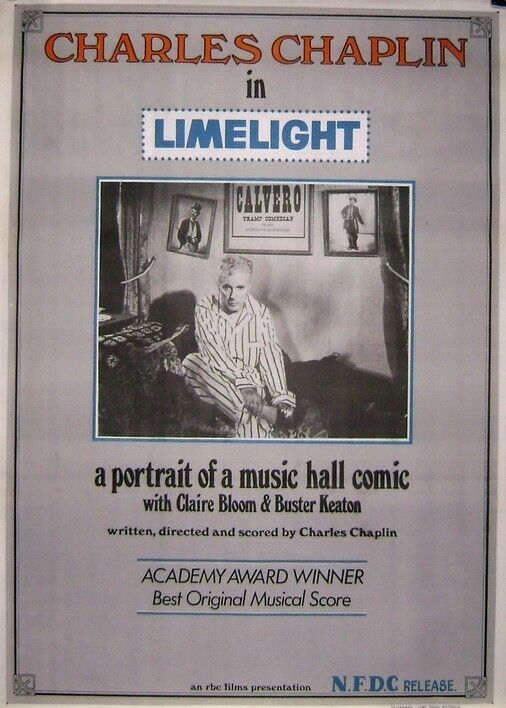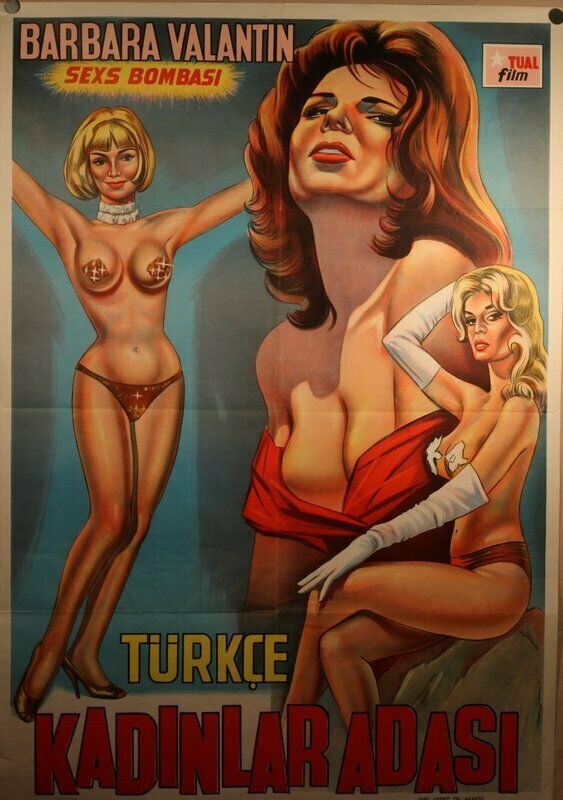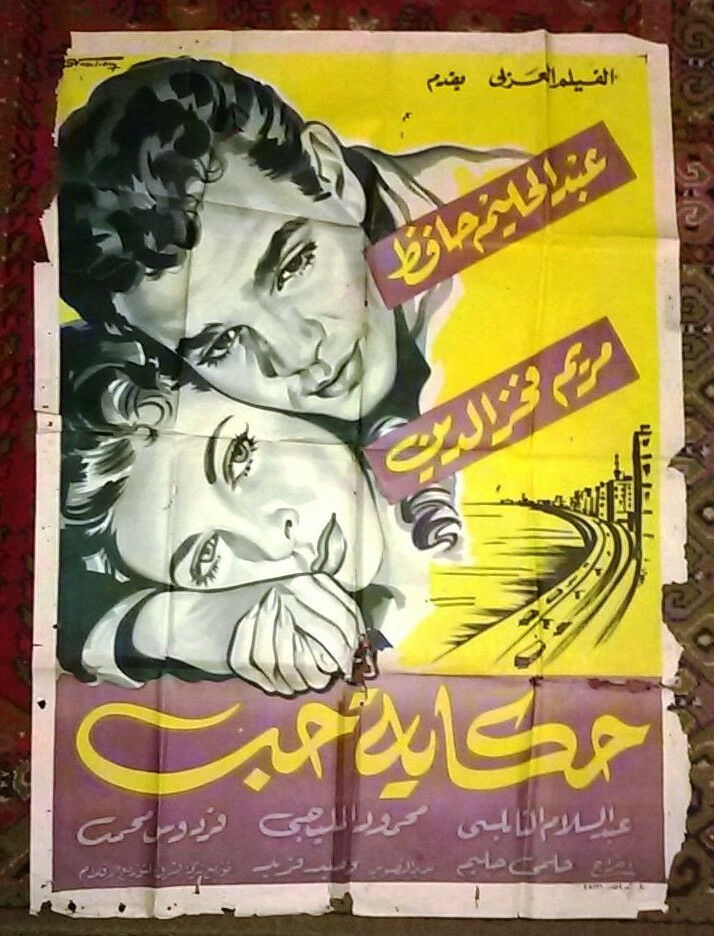Zmdi-facebook
Zmdi-twitter
Zmdi-youtube-play
Zmdi-instagram

¡¡¡Mátenme porque me muero!!! (1951) Tin-Tan & Tongolele By Francisco Rivero Gil
$633.60
96
Condition: Linen-backed without any restoration in very fine+ condition as described below.
Size: 27.5 x 37.5 inches
Year: 1951
Country/Region of Manufacture: Mexico
Film Title: ¡¡¡Mátenme porque me muero!!!
Industry: Movies
All returns accepted: Returns Accepted
Studio: Producciones Rodríguez Hermanos (Mexico)
Modified Item: Yes
Return shipping will be paid by: Buyer
Restocking Fee: No
Refund will be given as: Money Back
Original/Reproduction: Original
Director: Ismael Rodríguez
English Title: Kill Me Because I'm Dying!
Item must be returned within: 14 Days
Item: Vintage orignal country of origin Mexican poster
Object Type: Poster
Item Number: CH-MATENME-MEX
Modification Description: Professionally linen-backed without any restoration
Arist: Fransisco Rivero Gil
This is a vintage original 27.5 x 37.5 in. “country or origin” Mexican poster from the popular 1950’s Mexican comedy,
¡¡¡Mátenme porque me muero!!!
(
Kill Me Because I’m Dying!
), released in Mexico in 1951 and
directed by
Ismael Rodríguez
.
Based upon the novel by
Enrique Jardiel Poncela, Tin-Tan just won the lottery and wants to donate it to an
orphanage; however, Sataela and Riverita want to keep the money for themselves. In an
attempt to do so, they convince him of having a terminal disease and suggest
that committing suicide is his best option.
The artwork was designed by the renowned Spanish illustrator, Francisco Rivero Gil
(1899-1972), and is dominated by a large image of Tin-Tan (
Germán Valdés
), wearing a bright blue suit and hat with a bright yellow shirt, as he raises his hand to his neck as if he can’t breathe. During his ordeal, he is surrounded by a group of unsavory characters which includes El Enanito Tun-Tun (the Midget, portrayed by
José René Ruiz
), who is literally clinging to Tin-Tan by his jacket pocket, looking over his shoulder at the exotic
Tongolele
(herself). She is wearing a tight one-piece outfit and high heels as she holds her black cape open to expose the interior white lining. Tin-Tan is surrounded on both sides by three very sinister-looking men, one of which is pointing a gun (left) and, at the right, an evil doctor holds an absurdly large hypodermic needle and another man with a green face wields an axe. Francisco Rivero Gil’s signature is featured in the bottom right corner of the artwork and is displayed vertically.
This vintage original “country of origin” Mexican poster was
professionally linen-backed without any restoration whatsoever
, as none was needed since it was in near-perfect condition when we obtained it years ago. We had it linen-backed by Poster Mountain for conservation purposes only and it has remained in a flat flat ever since then. It is in very fine+ condition and the colors are fresh and vibrant without any signs of fading. Rivero Gil’s illustration style on this poster is particularly interesting. The image of the famous Tongolele is very reminiscent of the style of animation that was used in the Universal comedy horror classic,
Abbott and Costello Meet Frankenstein
, for the scene in which Dracula (Bela Lugosi) changes into a bat. The artwork of Francisco Rivero Gil has been on display at such famous institutions as the Museum of Modern Art (MoMA) in New York.
Germán Genaro Cipriano Gómez Valdés de Castillo
(September 19, 1915 – June 29, 1973), better known as
Tin-Tan
, was an actor, singer, and comedian who was born in Mexico
City but was raised and began his career in Ciudad Juarez, Chihuahua. He often
displayed the pachuco dress and employed pachuco slang in many of his movies,
some with his brothers Manuel “El Loco” Valdés and Ramón Valdés. He
made the language of the Mexican American pachucos famous in Mexico. A
“caló” based in Spanglish, it was a mixture of Spanish and English in
speech based on that of Mexican immigrants. Tin Tan began his career by calling himself
Topillo
(slang for the trickster), which
a friend of his stated sounded too vulgar and uncouth for a comedian. He
suggested instead the nickname Tin Tan (based on the phonetic sound of bells
ringing), which Tin Tan originally disliked but grew to like and use
professionally for his whole career.
His movie
career came as a completely surprise for everyone. He used to work as a sweeper
for the XEJ radio station in Ciudad Juarez, when he decided to try and mimic the
radio announcers for fun. Unbeknownst to him, the actual announcer had left
leaving the microphone on. His quick wit and funny personality garnered him
acclaim and he was quickly promoted to the main radio announcer himself. It was
in this circumstances that legendary ventriloquist, Paco Miller, contacted him
to act in films, and his career began. He usually
acted alongside his “carnal” (blood brother), Marcelo Chavez, who also
accompanied Tin-Tan with a guitar. He was a prominent figure during his golden
years of movie making, from 1949 onward. His 1948 movie,
Calabacitas tiernas
, a comedy, was chosen as one of the best in
Mexican cinema
.
He was also
one of several people who were originally intended to be on the front cover of
the Beatles’
Sergeant Pepper’s Lonely
Hearts Club Band
, but declined the invitation. He requested
that Ringo Starr swap him for a Mexican Tree known as “El Arbol de la
Vida” (the Tree of Life) and he did. He was the voice of Baloo the bear
and Thomas O’Malley the cat in the Mexican Spanish dubbing of the Disney films
The Jungle Book
and
The Aristocats
; both
roles were originally voiced by Phil Harris. Tin-Tan was the subject of the
2005 documentary,
Ni Muy Muy… Ni Tan Tan…
Simplemente Tin Tán
, by Manuel Márquez and Carlos Valdés, son of the comedian.
Yolanda Yvonne Montes
Farrington
(born January 3, 1932 in Spokane, Washington, better known by her stage-name Tongolele, is a Mexican
vedette
and actress of
American origin.
Her career was sheltered by theatrical success in the main
theaters and cabarets of Mexico City. Tongolele boosted the success of the
“Exoticas”, a group of vedettes that caused a sensation
in Mexico in the late 1940’s and early 1950’s. Although other vedettes that
became popular at the time (like “Kalantán” and Su Muy Key
) appeared, none
reached the levels of popularity of Tongolele. Yolanda was baptized by Mexican
journalist Carlos Estrada Lang as “The Queen of Tahitian Dances,” as
each night, she congregated a wide male audience who adored her perfect
silhouette and feline movements that marked an era in Mexico. She made her film debut in 1948 in the film,
Nocturne of
Love
, starring the actress Miroslava Stern
. In 1948,
she starred in the film,
¡Han matado a “Tongolele”!
, directed by
Roberto Gavaldon. The plot was developed in the theater Folies Bergère of
Mexico City. At another level of the plot, several envious people attempted to
assassinate her. The film premiered on September 30, 1948. As a guest, she
starred in
El Rey del barrio
(1949)
and
Kill Me Because I’m Dying!
(1951) and the musical,
Musica de siempre
(1956). In 1966, she returned to the cinema and appeared in
the terror film
The Panther Women
. In
1968, she appeared in the film
El crepusculo de
un dios
, directed and carried out by Emilio Fernandez
.

